
Scientific name: Carcharhinus amblyrhynchos
Size: From 4,9 to 6,5 feet
Color: Grey, black
Distinguishing feature: Gray livery, wide black band on the back of the caudal fin
Where did we see it: French polynesia, Mayotte, Maldives, Raja Ampat, Egypt
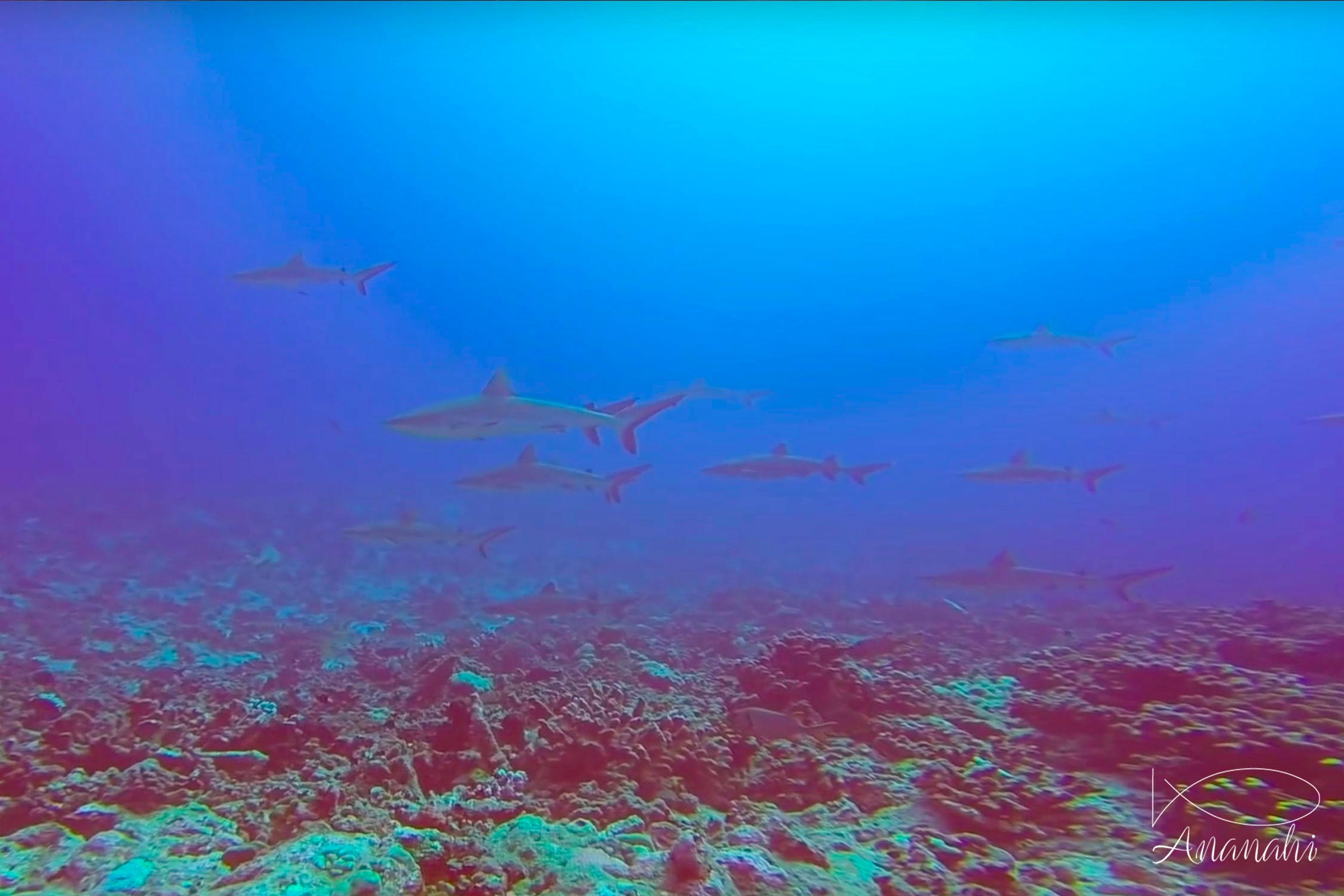
Scientific name: Carcharhinus amblyrhynchos
Size: From 4,9 to 6,5 feet
Color: Grey, black
Distinguishing feature: Gray livery, wide black band on the back of the caudal fin
Where did we see it: French polynesia, Mayotte, Maldives, Raja Ampat, Egypt
The gray shark is often gregarious during the day and therefore visible in broad banks. It is more lonely during the night.
It is a curious shark, who does not hesitate to approach the divers and get away just after.
The gray shark must swim continuously to feed these gills with oxygen. He is therefore fond of the passes that allow him through the strong current to eat oxygen without effort.
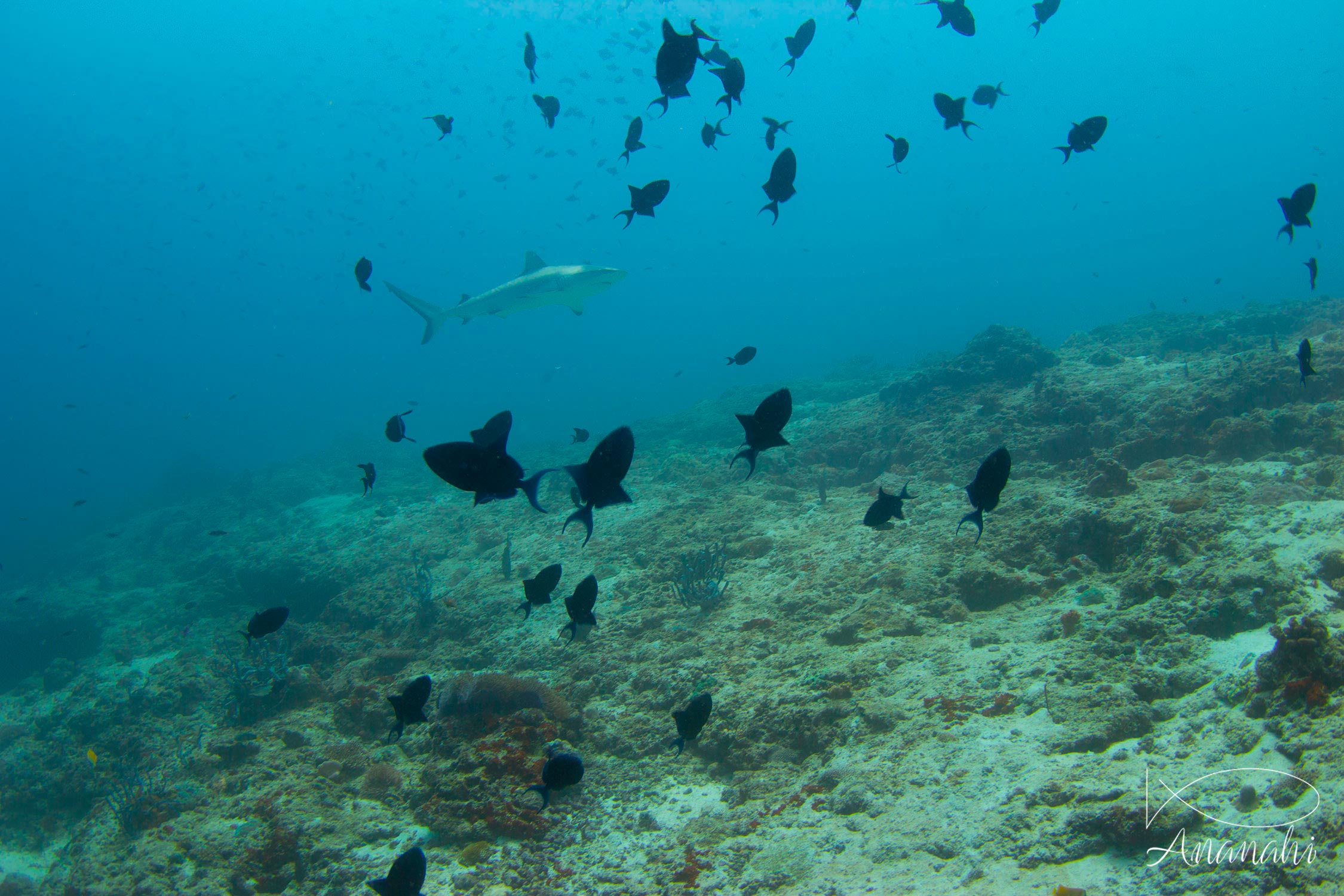

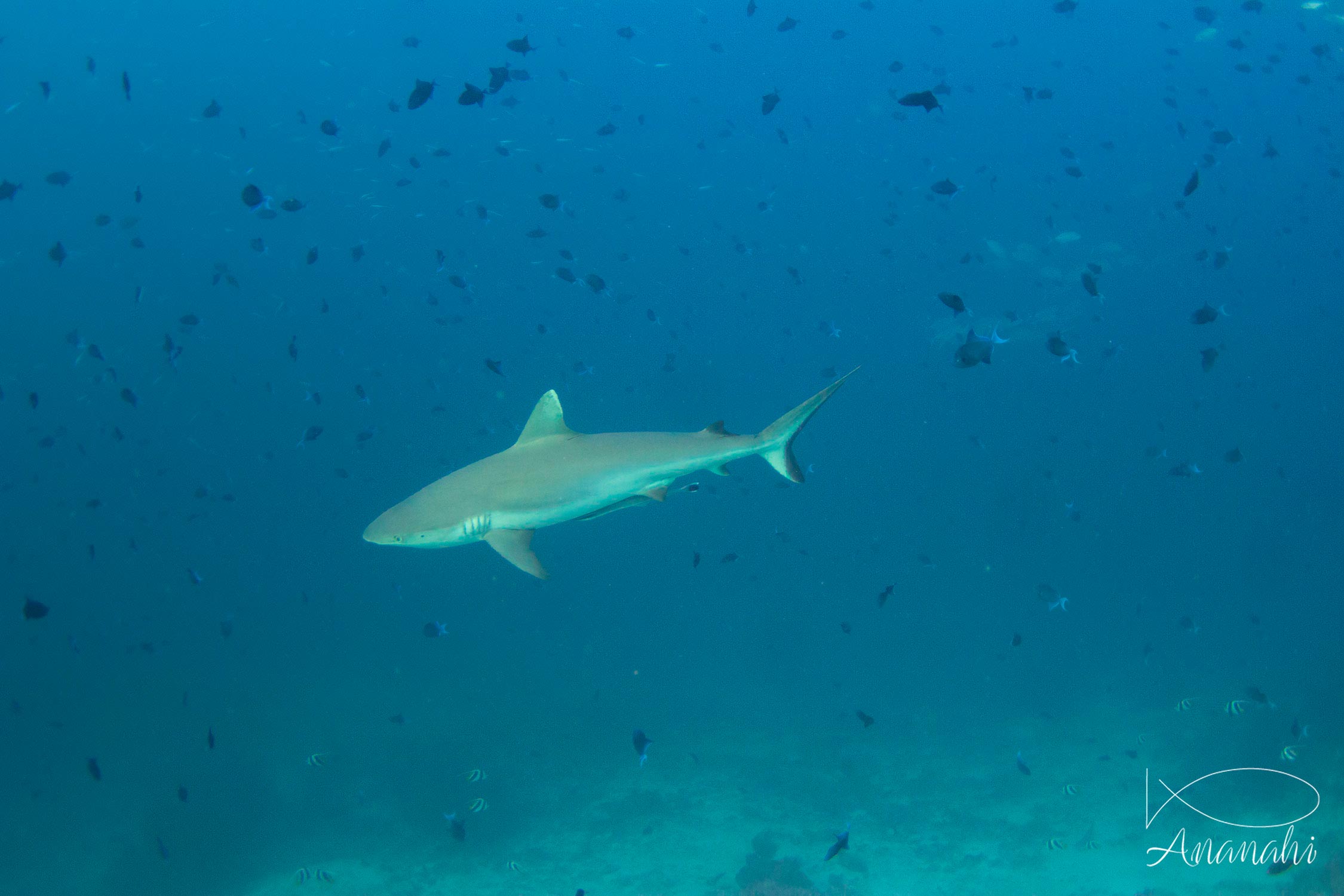
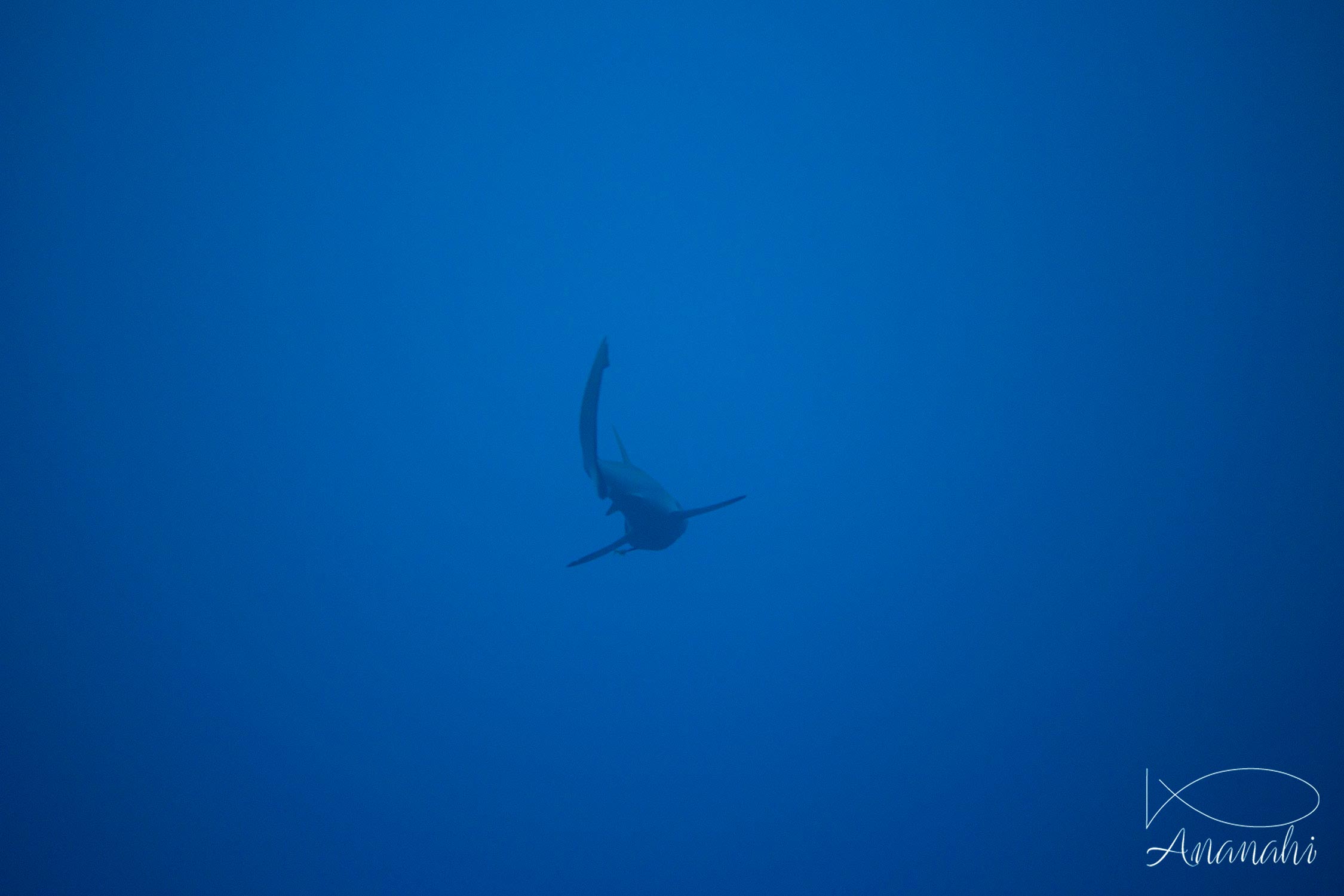

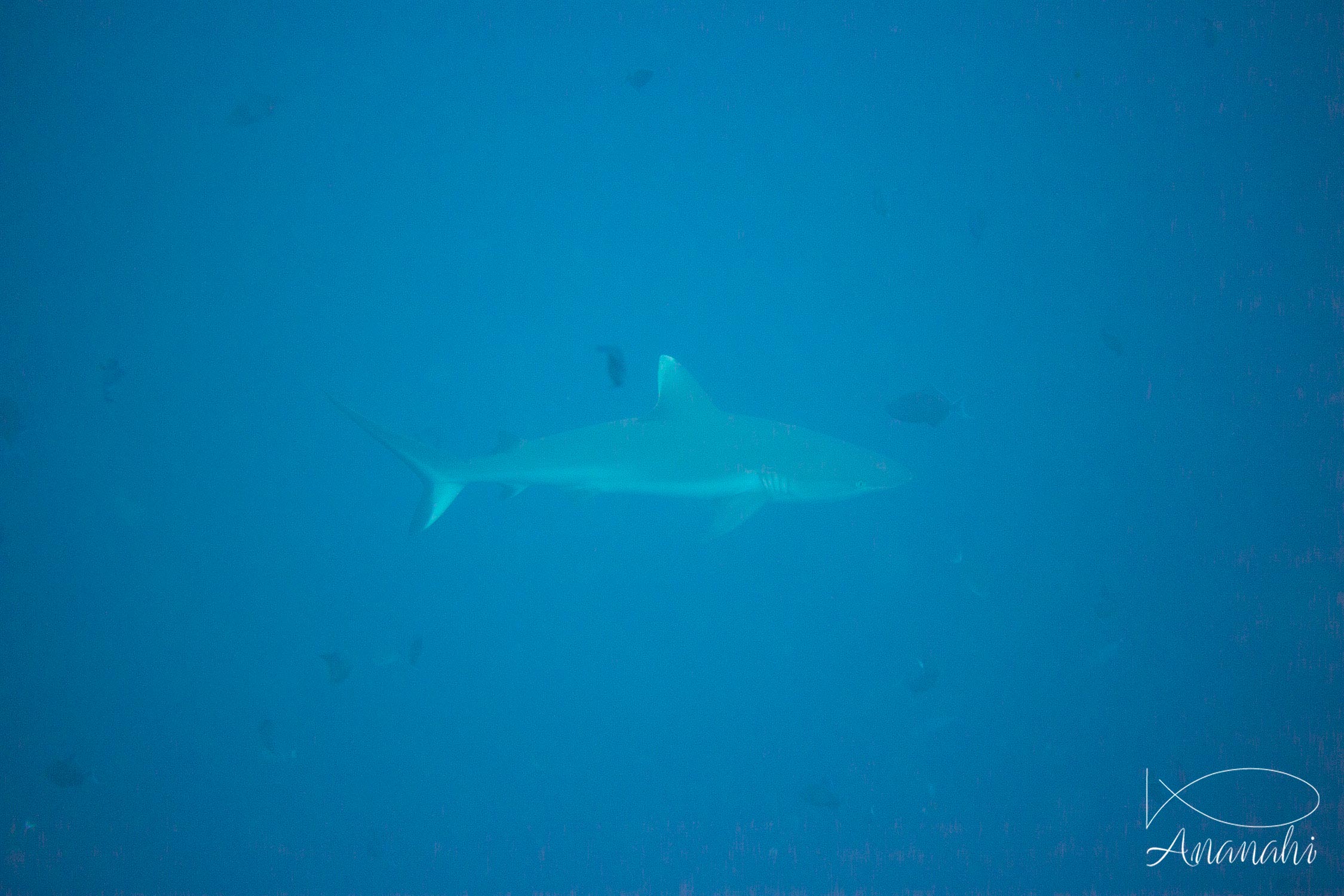
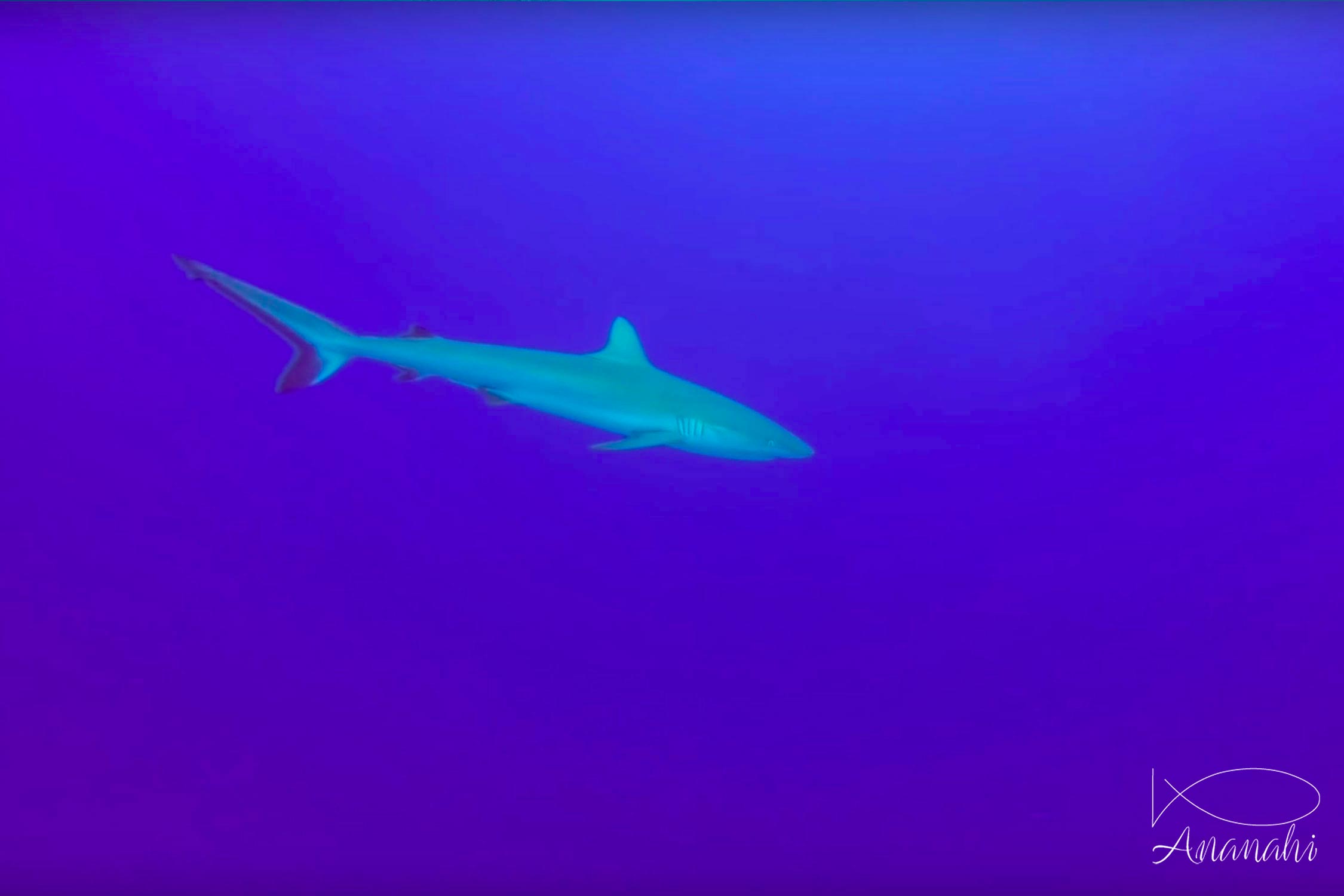




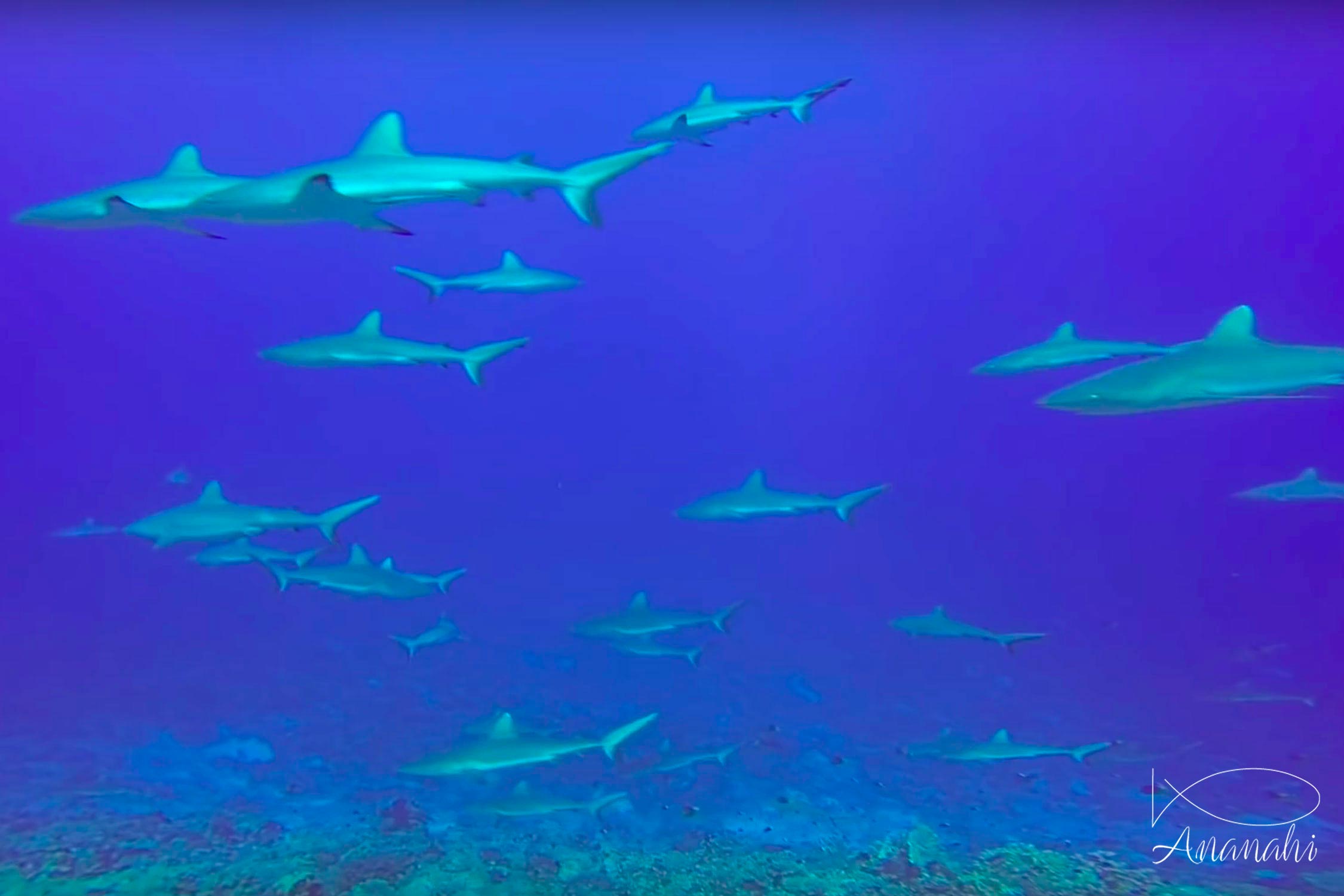
Mammals have a horizontal tail.
Fishes have a vertical fin.
The tiger shark has slender marks similars to the lines of tigers, hence its name.
When it is juvenile, these marks are round and not vertical. They change when it grows.
Some sharks can stay motionless on the sand (white tips reef sharks, nurse sharks, etc.).
These sharks don't have to swim to bring oxygen to their gills like other sharks (grey, hammerheads tc.)